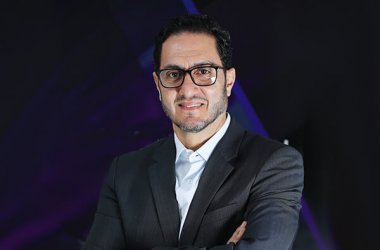 The healthcare market in Asia-Pacific is booming and an interesting example of the innovation of the region is reflected in Seoul National University Bundang Hospital’s embrace of SAP HANA as a data warehousing solution.
The healthcare market in Asia-Pacific is booming and an interesting example of the innovation of the region is reflected in Seoul National University Bundang Hospital’s embrace of SAP HANA as a data warehousing solution.
According to Dr. Hee Hwang, CIO at SNUBH and associate professor for pediatric neurology, the institute was the first fully digitalised, paperless hospital in APAC back in 2003.
“Our hospital is one of four affiliated hospitals to the Seoul National University School of Medicine,” Hee says. “Seoul National University has the longest history in modern medicine in South Korea – more than 150 years. Its reputation is of the highest standard in the country.”
“We opened as one of the affiliated hospitals to the medical school in 2003 as the first full digitalised paperless hospital in the Asia Pacific area,” he says with pride.
Besides digitising its medical records, SNUBH also introduced the Hospital Information Exchange System for easy sharing of patient records. “In 2006, we launched our hospital information exchange system for the data sharing between our hospital and more than fifty primary clinic hospitals,” Hee says. “Through that kind of system, the participating patient does not need to bring any kind of paper. When they visit our hospital, doctors can see all kinds of information in online systems, through the data sharing (application). That system was verified by the IHE (Integrating the Healthcare Enterprise), an organisation to give us some guidelines for the international standard for the data sharing project for the healthcare IT system. Our system has been verified by IHE Connectathon, the verification programme, for the last three consecutive years.”
A year later, SNUBH included RFID sensors to its healthcare system for real-time asset tracking. “In 2007, we adopted RFID technology and barcode technology for the real-time tracking system, and through this kind of technology we adopted very safe close-the-loop medication or administration systems, for the patient’s safety, (and) for the reduction of medication error within the hospital,” he says.
Boosting patient care with HANA
The hospital took its biggest technological leap when it decided to invest in a clinical and business data warehouse system that not only improved patient care, but also aided doctors in retrieving key data in real-time for clinical research work.
“For HANA DB and SAP collaboration, the clinical and business data warehouse system is very important for the tertiary hospital,” Hee says. “In Seoul National University Hospital, we have 21,400 beds and our main hospital, Seoul National University Hospital, has 1900 beds…So the data analysis or data collection and providing some feedback to the clinicians or administrative officers is critical for the maintenance of our system, (and) our hospital.”
How did they zero in on SAP HANA for their requirements? According to Hee, it is a long story. “We have been operating our data warehouse system since 2004, but there were a lot of problems in the previous version of the data warehouse system,” he says. “The first problem is the (system’s) velocity. For the retrieval of data for a certain period, such as 3 months or 6 months or 1 year, it took 30 minutes to more than 1 hour. The second problem was that very valuable information was input into the forms of the free text from the clinicians to the medical chart, to finish the documentation.”
The third problem was around big data issues. The quality of data was not good and data volume was very high because free text data existed along with image data. So data analysis was not easy for the hospital staff.
When Hee heard about big data solutions in 2010, he asked his staff to look at all the offerings in the market and they finally settled for SAP HANA. “After the 1 year project, we launched our next generation data warehouse system this July (2013), and every doctor in our hospital was very happy to see that, because retrieval of 10-year-old data for a very complicated query now just took 3 to 5 seconds,” Hee says.
With the deployment of SAP’s HANA database (DB), patient care improved visibly and long-held assumptions were also broken with real-time feedback.
For example, in South Korea’s hospitals, including SNUBH, the practice was to administer pre-operative 3rd-line antibiotics for 5 to 6 days. In contrast, the U.S. medical association advises hospitals to administer 1st-line antibiotics for 1 to 2 days before surgery. The longer use of 3rd-line antibiotics – which is stronger – would lead to viruses building up resistance to the drug and might prolong medical care.
“With real-time feedback [via HANA] over days and weeks, [our] doctors began to reduce the use of antibiotics,” he says. “Within 3 months of adopting such a clinical indicator, usage dropped from 5.8 percent to 1.2 percent. The use of 3rd-line antibiotics went down to zero percent.”
“This is of huge clinical significance to the patient because unnecessary antibiotic usage makes drug resistant organisms in individual patients, so the reduction of antibiotic usage is critical for the long-term clinical outcomes,” Hee adds.
The fact that HANA DB was originally developed by Korean scientists was also a point of attraction for Hee and his team, the CIO admits.
A valuable system
How did Hee persuade his CEO to invest in an expensive tool like SAP HANA? The truth is that our hospital does not want to lose its leading edge in IT over other competitor hospitals in South Korea or in the region, Hee says. “So, making the investment decision was not so difficult for our hospital,” he says. Secondly, “the medical legal suing” problem is a huge economic burden for the hospitals. We assume that we can avoid many legal suits from the patient through this kind of data warehouse quality control system, he says. “It has really impacted the hospital reputation and the hospital’s economic situation.”
“I feel that data warehouse system and business intelligence are big issues for hospital management in the very near future,” Hee says. “The next step for us is to use this data warehouse system very well, in a clinical manner and in a business manner, in a tertiary hospital setting, and prove that this kind of huge investment into the data warehouse system or in-memory or parallel appliance is really useful and makes positive return on investment.”





